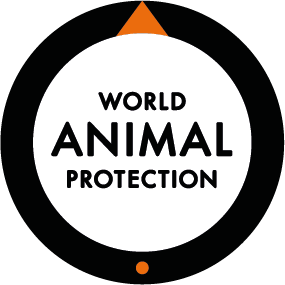What's happening in South America?
It would be an understatement to say that the wildlife trade in Latin America is moderate, when it is truly massive.
Millions of wild animals have been ripped from the wild for body parts, used as traditional medicine, and to live as exotic pets. There are more than 450,000 wild animals kept in captive breeding facilities in Brazil alone.
The information we gathered from this region is only the tip of the iceberg, but even this data paints a frightening picture.
For the animals, these stories are tragic. And every day we learn more about the dangers of how this trade puts human life at risk as well.
It is much more dire than you think. We must do everything we can to stop the wildlife trade in Latin America and around the world.
The captive birds of Brazil
The number of wild birds living as pets in Brazil is shocking. The last official estimate provided in 2013 stated that 38 million birds are kept in homes throughout the country.
Although there is a legal trade of certain birds like parrots, macaws and parakeets, trafficking of these animals has reached critical levels.
Our research showed that some of the most trafficked bird species are the same ones being sold by commercial and hobby breeders, raising concerns as to whether legal trade is acting a cover and potentially stimulating illegal trade.
Captive birds often suffer from malnutrition, feather plucking and aggressive behaviours. Malnutrition can be responsible for up to 90% of all clinical conditions in birds seen by avian veterinary practitioners.
But human health is also impacted. Many diseases may be transmitted from birds to humans, including Psittacosis, that can cause mild illness, pneumonia (lung infections), and even death in some cases.
Jaguars at risk from the Traditional Medicine trade
An undercover investigation by World Animal Protection revealed shocking evidence that wild jaguars are being cruelly poached to fuel the demand for traditional Asian medicine.
A close up on cruelty
Wildlife selfies that involve captive wild animals as photo props are an increasingly alarming source of animal welfare concern in the Amazon. The prevalence of these images on social media is driving up the interest in this activity, and as a result masking the cruelty that lurks behind the scenes.
Compounding this disturbing trend is the reality that a significant number of species on offer at these tourist attractions, are either threatened by extinction or are listed as needing international protection. The potential impact on species decline needs serious consideration.
One very popular animal being used for wildlife selfies in the Amazon is the brown- throated three-toed sloth. Their recent prominence in film and television (Zootopia, Animal Planet’s “Meet the Sloths”, CNN Heroes) speaks to public interest in these intriguing creatures. What most people don’t know, however, is just how fragile sloths are. It is extremely likely that poor handling, combined with poor nutrition and housing, all in the name of selfies, is a death sentence for these iconic mammals of the Amazonian rainforest.
We know that animals are more susceptible to infection when they are kept in a poor environment, on a poor diet, or under stress - everything we witnessed during our investigation - and with zero biosecurity measures in place at these tourist attractions, using wildlife as selfie props could potentially be the epicentre of the next zoonotic disease outbreak.
Macaws in the luggage
Macaws are majestic birds that are frequently captured and smuggled from Western Suriname to the rest of the world. Investigations by World Animal Protection revealed the cruel method used to take these birds from the wild. A live, lure bird is repeatedly forced to endure being tied to the ground or a tree as it’s distressed calls attract the wild Macaws to capture.
Once captured, the birds are bought by exporters for international trade. They are often illegally exported using airlines or are smuggled out of the country in luggage.
Research has found that the main Suriname bird importers are Singapore, Russia and Thailand.
While fewer wild-caught Macaws are being traded to Europe in recent years over Avian Influenza fears, demand actually increased in regions across Asia and the Middle East.
You have the power to fix this
You now know that the global wildlife trade is much bigger and much more dangerous than you thought it was. You know that entire species are being endangered. You know that millions of animals are suffering every single day. You know that the conditions these animals are forced to endure are rife for disease. You know that diseases can be transferred between wildlife and humans. And as of this year, you know how truly devastating a new disease can be when it spreads across the globe.
You can help stop the next pandemic by taking action today. Please sign the petition now so we can deliver it to the G20 summit in Saudi Arabia this November. Sign it and tell the world's leaders that you demand an end to the global wildlife trade before it's too late.
